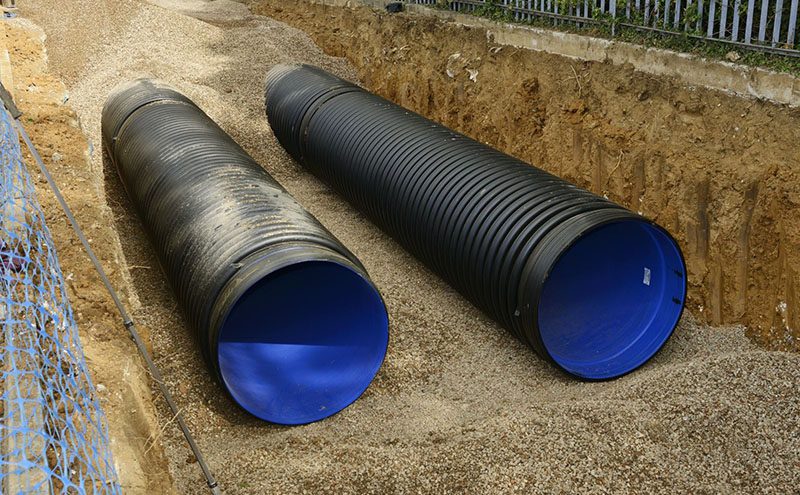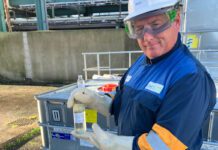
By Jason Shingleton, BPF Pipes Group
Wouldn’t it be useful in designing and building drains and sewers to be able to quickly refer to easily accessible guidance?
The BPF Pipes Group has produced new guidance: Specifications for Plastic Pipes, Chambers, Manholes and Covers for Drainage and Sewerage Applications, which can be accessed at: https://www.bpfpipesgroup.com/media/21445/Drains-and-Sewers-guidance.pdf. This guidance document clearly and concisely sets out information on product standards for pipes, chambers, manholes and covers; which are current and what to use where for all applications from private drains to public sewers.
The guidance has been prepared ahead of the publication of two key documents, The European Standard BS EN 752: 2017 with its UK National Annex and Sewers for Adoption 8th edition for the design and construction of private and public drains and sewers. The revision of Sewers for Adoption, following hot on the heels of the European Standard, represents the first real opportunity for designers and installers to obtain clear and consistent advice covering the full spectrum, from private drains built to Building Regulations, through to publicly adopted sewers.
Background
In October 2011, existing private sewers in England and Wales were transferred to water and sewerage companies and new sewers and lateral drains were required to be adopted. Installers who had traditionally been building for the private market, are now building for public adoption. This means that the advice and requirements contained in existing documents Approved Document H 2002 and amendments 2010 and 2015, Sewers for Adoption 6th edition 2006 and 7th edition 2012, BS EN 752 2008 and amendments 2013 has become ‘out of step’, confusing for the end user and in some cases not aligned with modern practice.
What’s new?
This new BPF Pipes Group guidance provides quick access to key information for those designing and installing sewer pipework, chambers and manholes. It is divided into five clear sections: Drains and Sewer Pipes; Inspection Chambers; Manholes; Covers for Inspection Chambers and Manholes; Proving the Integrity of the Wastewater System. In each of the first four sections, the correct and current product specifications are identified and summarised, terminology is demystified, and key recommendations given. The final section succinctly explains the requirements for whole system integrity testing following construction.
BPF Pipes Group members provide detailed support through their technical departments on a day-to-day basis regarding the application of Sewers for Adoption and the Building Regulations for drain and sewer construction. Members were well placed therefore to provide expert input to the BSI committee to update the National Annex to EN 752 which now clarifies and simplifies best practice, explains and emphasises the importance of design and product choice on safe working, and supports designers and builders in their choice of products and system layouts. Jason Shingleton, chair of the BPF Pipes Group working group on drains and sewers, said: “A significant step has been taken by the BSI committee in modernising this national guidance – the BPF Pipes Group is pleased to have been able to provide the expertise to underpin the work.”
The BPF Pipes Group is strongly committed to the provision of clear and consistent guidance which is easily accessible to developers and designers. Its own guidance therefore matches the National Annex; let’s now look at the greatest benefits of the improvements to clarify and simplify best practice.
Prioritising safety of the public and personnel working on the drain or sewer
This has been fundamental to updating the National Annex; everything follows the principles of Confined Spaces Regulations 1997 for operations to be carried out without entering a confined space. This introduces a new challenge to designers, to adopt above-ground working as the new default, and having to justify where below-ground working is needed (for example in deep installations and at high maintenance points). This applies even for large diameter public sewers. To help, the new Annex has addressed the confusion over clear opening sizes for access points by explaining the reasoning behind sizing, and by providing consistent and easy to follow text which applies equally to private and public systems.
Accurate and consistent definitions
The BPF Pipes Group guidance shows how many different terms are used to describe the same system components. Providing definitions which can be used across the industry will minimise confusion and save time. For example, the four defined access points are now:
Rodding points (small diameter connections at the upstream end of a drain or sewer that permit entry into the system for cleaning or inspection downstream, and which can include gullies incorporating rodding points);
Access fittings (normally located near the upstream end of a drain or sewer, permitting entry into the system for cleaning or inspection. Restricted access means operations to remove debris using suction hoses are not possible);
Inspection chambers (chambers with working space at ground level only, used to introduce equipment for testing, inspection and maintenance. The chamber’s working space normally permits additional operations to those carried out through an access fitting, such as debris removal using suction hoses or over-pumping from one chamber to another);
Manholes (chambers with working space at drain/sewer level used for entry of personnel and equipment).
Robust and relevant advice
As design guidance develops over the years, it is easy to lose sight of the technical justification behind the original advice. BSI Committee BSI B/505/22/P6 has carried out some excellent and thorough work in challenging the text of the National Annex and ensuring it is based on sound and clear principles. Examples include recommended spacing between access points (the table now follows logical reasoning), updated standards (text and tables cover current market products, linked to consistent definitions), and good design principles to minimise problems in service (such as quick and easy access for inspection, cleaning and maintenance equipment which prevents equipment from getting stuck).
The BPF Pipes Group is pleased to be able to offer this new guidance and welcomes the update to EN 752: 2017 and its UK National Annex. These together will go a long way to providing end users of the guidance with clear information and will be of considerable benefit for projects going forward.
Taking these improvements through to Sewers for Adoption 8th edition would directly benefit developers and designers who currently rely on manufacturers’ advice to interpret the over-complicated information given in the 6th and 7th editions. The challenge for the water industry is to ensure that good quality and resilient infrastructure is constructed by developers and self-lay providers. Clear, consistent and robust guidance will go a long way towards achieving this.






